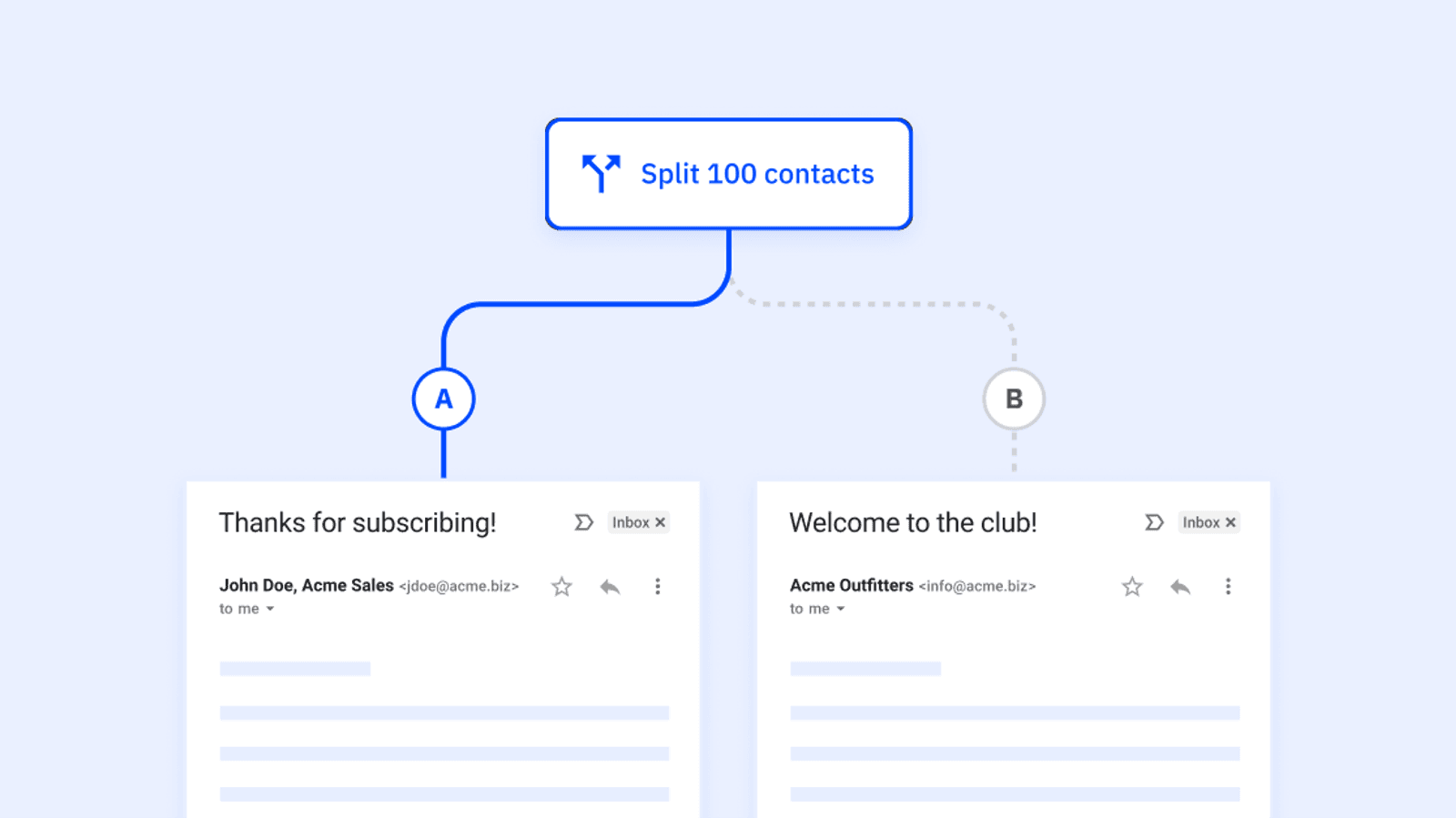B2B marketers have many responsibilities, but chief among them is reaching and connecting with potential buyers, AKA building a list of leads for your sales team.
A few decades back, this was more straightforward but less effective. You either ran an ad in the paper, picked up the phone, or went door-knocking in your local business park. Basically, you’d throw stuff against the wall and see what stuck.
Today, generating B2B leads happens primarily online, through various marketing strategies, in smarter and more targeted ways.
This article will look at 11 of the most potent B2B marketing strategies you can implement today to drive awareness, generate leads, and grow your bottom line.
Table of Contents
- B2B marketing strategies: what does it actually mean?
- 11 B2B marketing strategies to drive revenue growth
- Create a channel partner marketing program
- Invest in a long-term content-based SEO strategy
- Use account-based marketing to target high-value customers
- Build a community in your industry
- Use interactive content to drive engagement
- Inject personality into your content
- Leverage customer data to segment audiences and messaging
- Deliver dynamic content on product-focused landing pages
- Prioritize customer success and retention efforts
- Don’t “post and ghost”
- Develop segmented lead nurture campaigns
B2B marketing strategies: what does it actually mean?
Okay, let’s break this down.
First, what is B2B?
B2B stands for business to business, and it describes a type of company that sells its products or services to other businesses.
Its opposite is B2C (business to consumer), where companies sell directly to consumers. Coca-Cola, for example, is a B2C company, and we (ActiveCampaign) are a B2B organization.
So B2B marketing is simply the kind of marketing adopted by B2B companies, and B2B marketing strategies are guiding principles you follow to promote your product or service to another business effectively.
B2B marketing is different from B2C marketing because the customers and the purchasing process differ wildly.
First off, you’re appealing much more to logic than emotion in B2C marketing. This isn’t to say that emotions don’t play a part in B2B buying processes, but they are less critical. B2B buyers are focused on their business goals and the pain points your product will solve to help them reach those goals.
So that’s your primary objective with B2B marketing: reach your audience, show them how your product or service will solve their problems and change their life, and convince them that this value proposition is worth their money. But even this is common for plenty of B2C companies and products.
The real difference lies in the much higher product prices and switching costs, which typically lead to a much longer sales funnel (including multiple sales meetings, calls, personalized case studies, and more). Plus, you often have to convince multiple people within the company to close a deal, not just a single person.
It might sound difficult, but with the right approach, you can attract and close lucrative deals at scale without a million-dollar budget.
Let’s explore 11 B2B marketing strategies for doing just that.
11 B2B marketing strategies to drive revenue growth
These marketing strategies will help attract leads, convert new customers, and ultimately grow revenue.

1. Create a channel partner marketing program
Channel marketing is your hack for getting others to sell your product for you.
Okay, it’s not a hack in that it’s a legit strategy, but it’s a great way to increase your reach and build a team of “salespeople” on the ground.
With channel marketing, you essentially partner with another company (or individual, though it’s usually a business) to sell your product to end customers.

Your channel partners will take a cut, meaning you will lose out on a little bit of revenue opportunity, but it’s worth it considering how many more customers you may attract.
Let’s look at an example.
Imagine your company is a CRM platform. Your product has many different use cases, including real estate agencies.
Another company, which specializes in creating custom systems and software stacks for real estate agents, approaches you to become a partner. They want to resell your product as part of the customized software packages they’re building for their clients.
It’s a win-win situation. You sell an additional user license without needing to invest a single dollar in marketing or sales, and they take a cut while continuing to grow their business and services their customers’ needs.
2. Invest in a long-term content-based SEO strategy
SEO (search engine optimization) is the backbone of many B2B marketing strategies.
It’s all about attracting customers organically through search engines like Google.
Imagine you’re that CRM platform.
There are many potential terms a real estate agent might search for during their research journey. “Real estate CRM” is an obvious one, but that’s only likely to be the case when that agent is far down the sales funnel and ready to purchase.
In this case, we have several high-intent keywords to target.
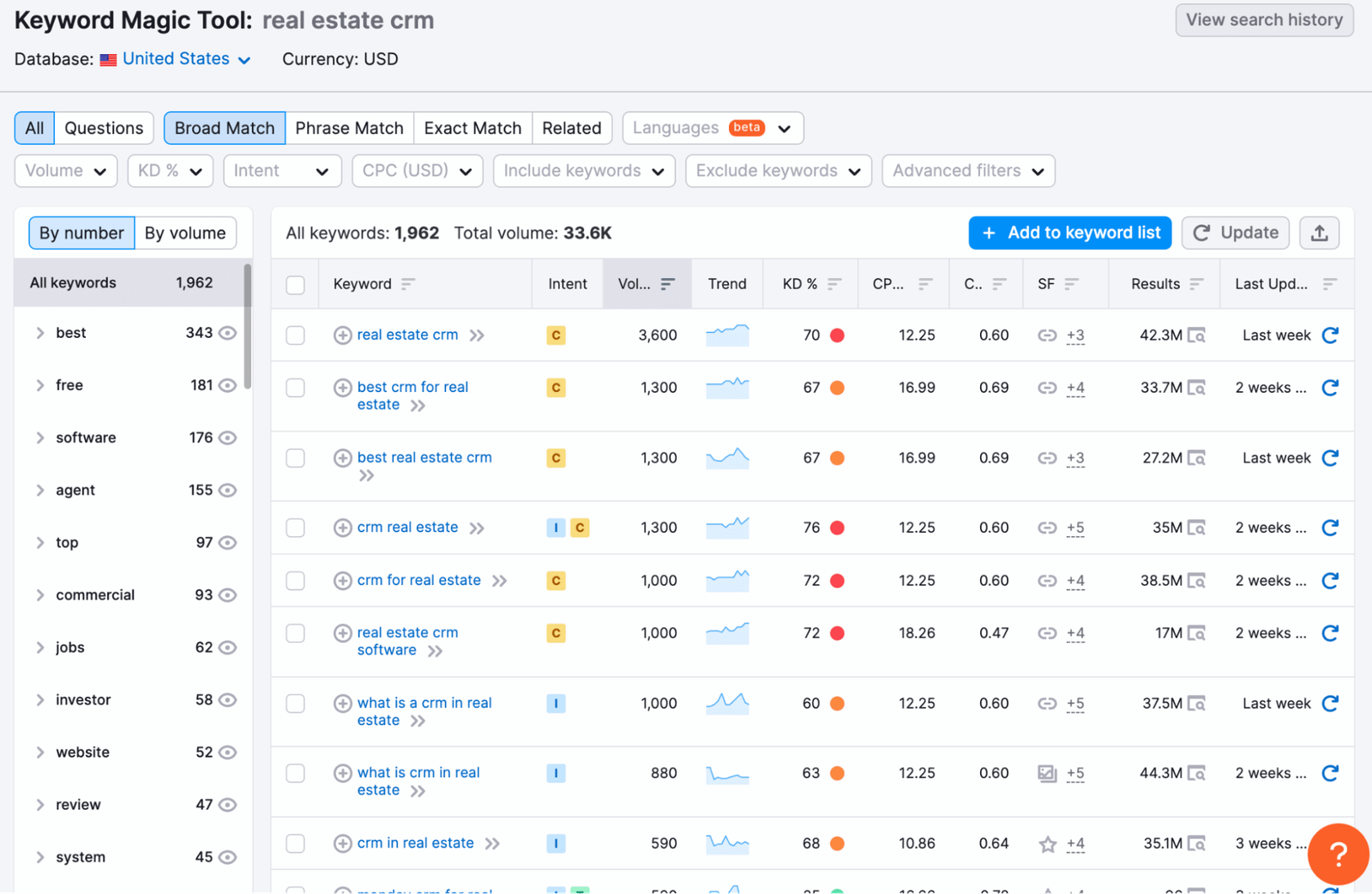
We can create conversion-focused landing pages targeting terms like “CRM for real estate” and educational blog posts for terms like “What is a CRM in real estate?” and “best real estate CRM.”
The important factor to remember here is that your content-based SEO strategy should be focused on the long-term.
Look at the search phrase “CRM for real estate,” for instance. It has a decent search volume (1000 searches each month) but a high keyword difficulty (72%). It will be hard to rank for this term on a site with low Domain Authority and minimal content.
You’ll have a better chance once you have:
- A stronger Domain Authority
- Backlinks from high DA websites
- A robust internal linking strategy
- Other ranking terms that link back to your piece target thing keyword
To give yourself the best shot at building some page-one rankings and developing your domain authority, it would be smarter to first work on content that targets lower-difficulty keywords, like these:
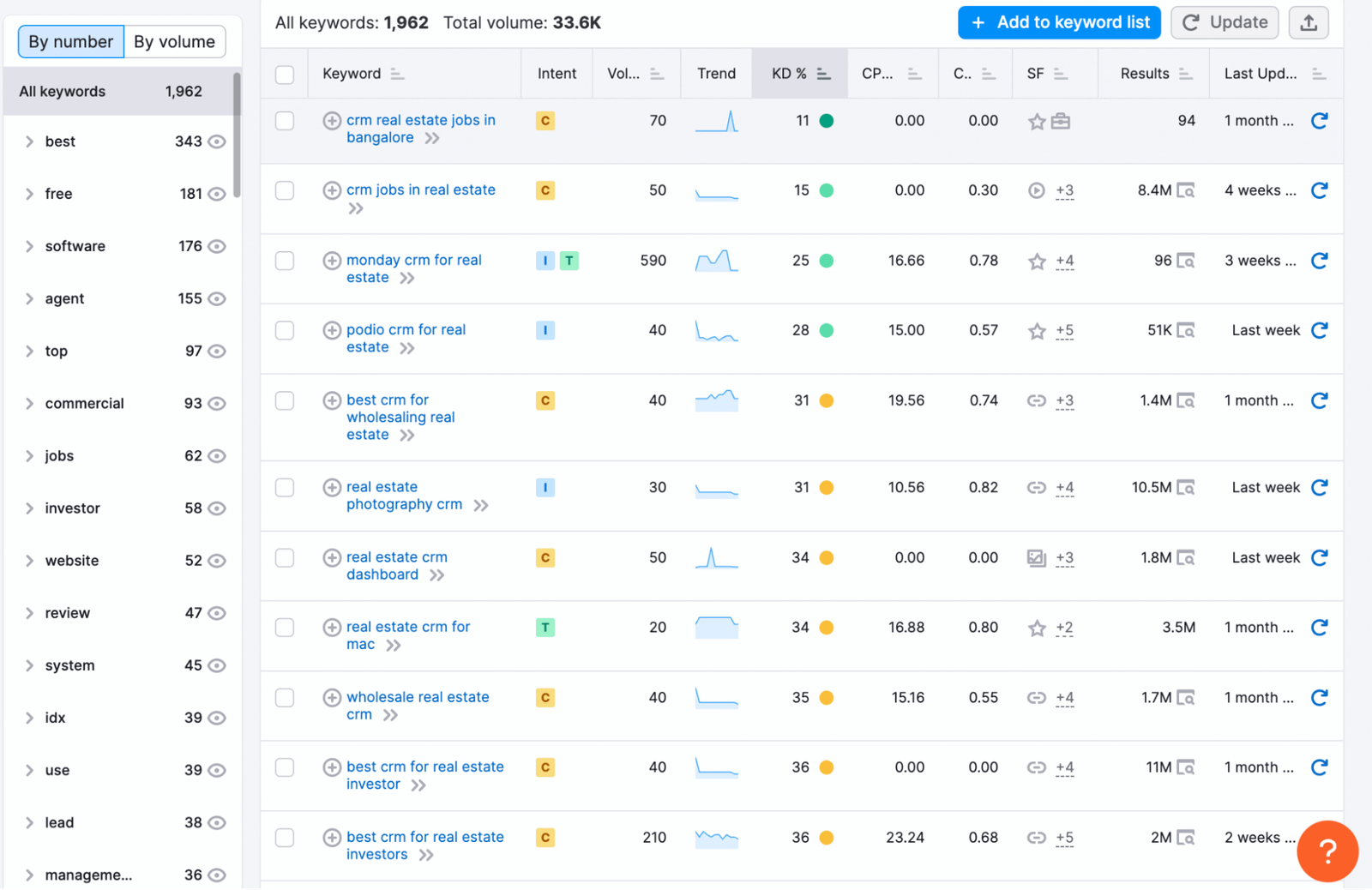
These keywords have a lower monthly search volume but are easier to rank for. As you develop first-page positions, you can add internal links to your higher-intent, higher-difficulty pages and improve your chances of ranking.
Make sure you double-check that the intent is relevant to your product before you start creating content. “CRM real estate jobs in Bangalore,” for example, probably isn’t a good keyword to target as it’s for job searchers, not real estate agents who want better CRM software.
3. Use account-based marketing to target high-value customers
Account-based marketing (ABM) is growing in popularity, particularly among B2B organizations targeting enterprise-level customers.
Here’s how it works.
The traditional B2B marketing approach is to identify what your ideal customer looks like (theoretically) using ICPs and buyer personas. Then, you push out your marketing campaigns and hope to reach some businesses that fit that profile.
ABM goes even deeper before jumping into marketing activities. Here, you identify the actual companies you want to target. These are called your target accounts.
Then, you develop personalized marketing tactics to reach these specific accounts.

Let’s look at an example.
GumGum, a contextual intelligence and advertising optimization company, set its sights on T-Mobile as a key account.
Its team identified then-CEO John Legere as the person to engage with and did a little social media stalking to learn that Legere is a huge Batman fan.
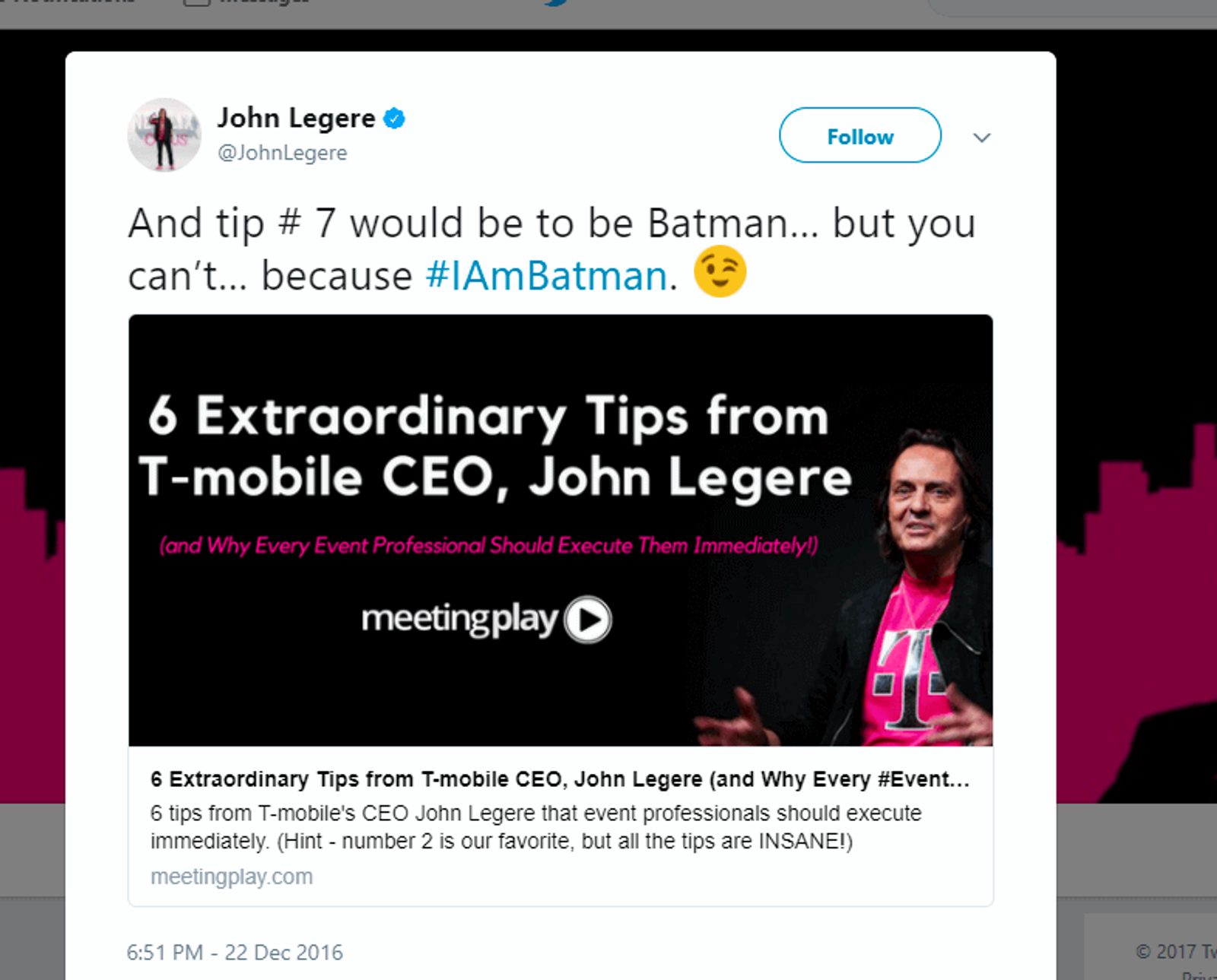
Then, they took personalization to the next level, developing a custom comic book that humorously illustrated how GumGum could transform T-Mobile’s online advertising game.
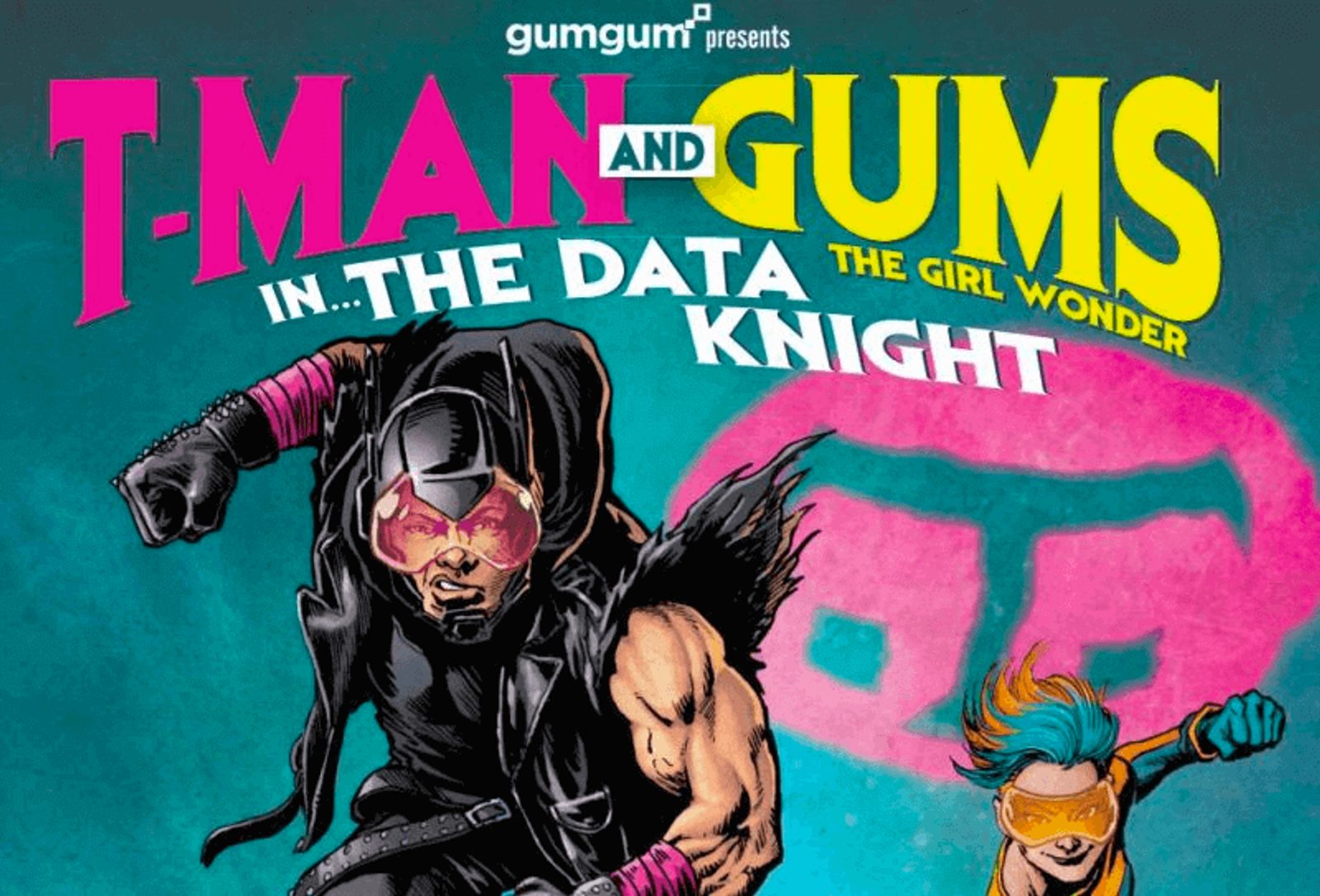
And yeah, GumGum got the deal.
You don’t have to do all the leg-work on your own, though. You can use account-based marketing software to identify key people in the companies and ways to reach them efficiently.
4. Build a community in your industry
Some digital marketing channels like social media ads can get you in front of potential customers quickly, but don’t underestimate the value of a long-term play. The best B2B marketing strategies understand the value of investing in the future.
Long-term B2B growth is all about building a presence in your industry, providing value, and developing meaningful relationships.
One of the most powerful ways to do this is by creating a community where 1 didn’t exist previously.
Advertising agency Carney provides a powerful example of how this works.
Its Facebook group, The Daily Carnage, has over 18,000 members, most of whom are active marketers themselves.
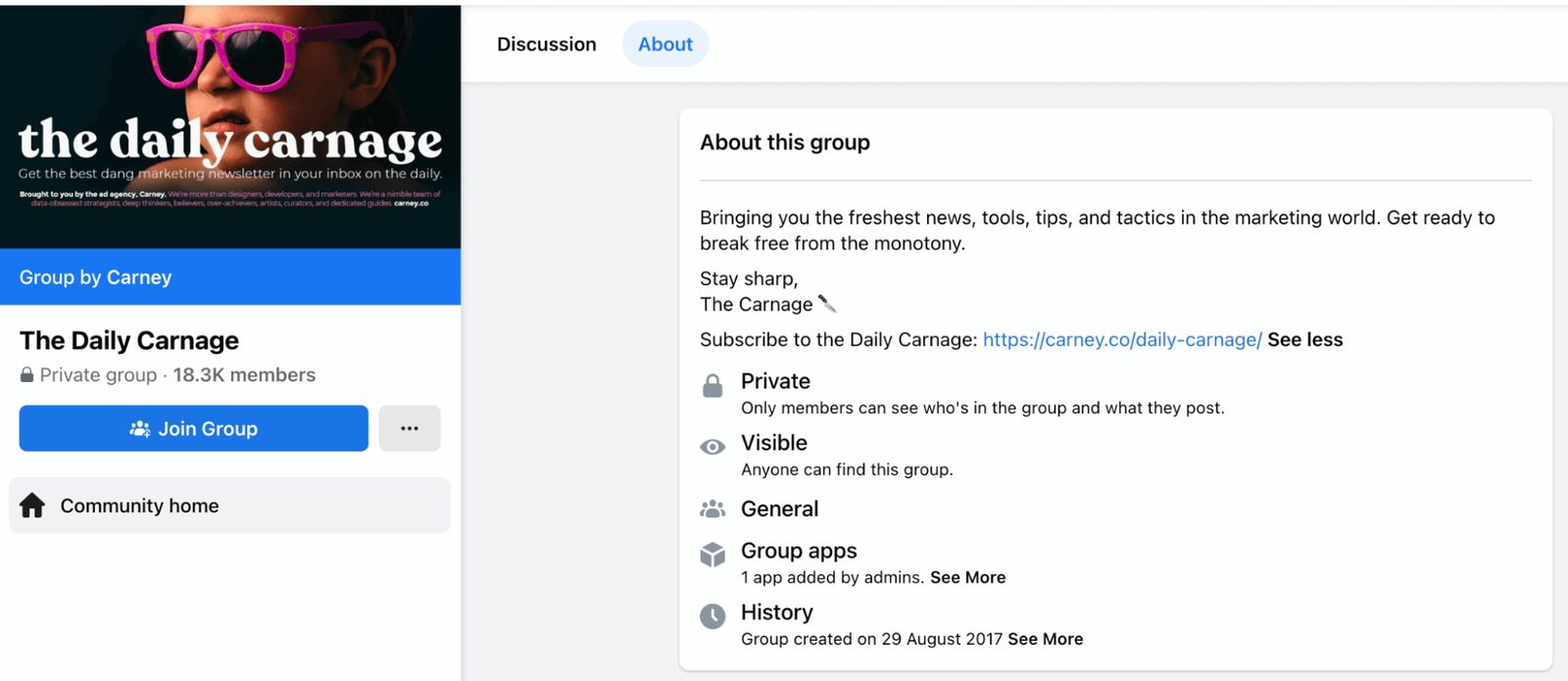
This is a lively group where experts can discuss marketing topics, allowing the team at Carney to jump in and provide advice or expertise where relevant, slowly building relationships with thousands of marketers who might require Carney’s services now or in the future.
Let’s take a closer look at another example from Belkins, a lead generation agency. Belkins is building a private B2B sales and marketing Slack community for SaaS founders, CEOs, and investors. This invite-only community serves as a dedicated space for learning from industry experts, collaborating on projects, and seeking and giving advice.
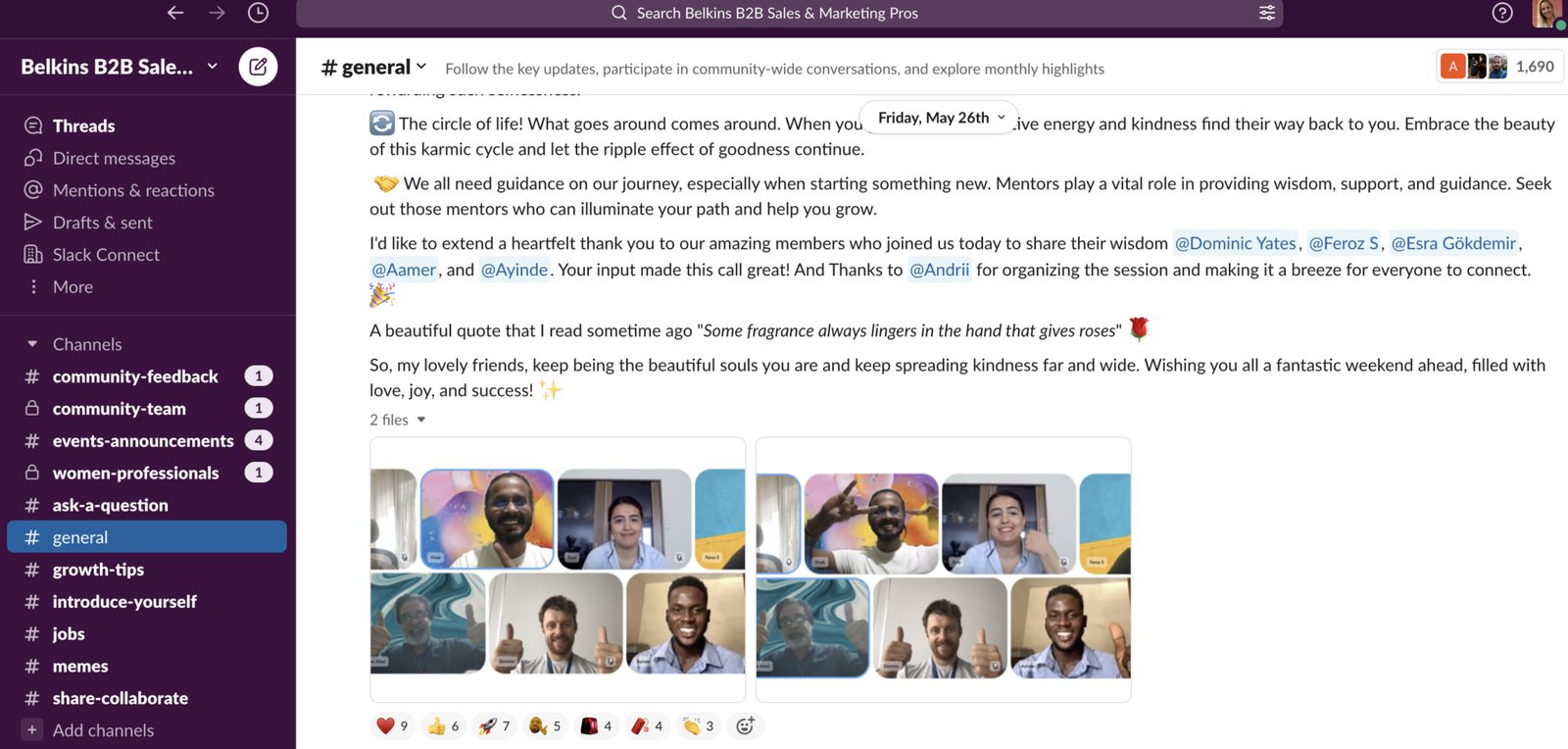
Every week, the community organizes exclusive talk shows, member-supported masterclasses, and provides support for product hunt launches. Community members also have the opportunity to engage in Ask Me Anything (AMA) sessions with industry experts. Through these initiatives, Belkins aims to provide a strong foundation for sales and marketing professionals, enabling them to enhance their skills, connect with like-minded individuals, and tap into the expertise of industry leaders.
“Building a community in your industry is the secret sauce for driving revenue. It creates trust, fuels word-of-mouth marketing, gathers invaluable feedback, sparks collaboration, and opens doors for upselling. A vibrant community is a powerful catalyst for sustainable business growth and financial success.” – Michael Maximoff, co-founder of Belkins agency.
5. Use interactive content to drive engagement
Inbound marketing is supposed to be a conversation, a series of interactions between the company and the customers.
Unfortunately, a lot of the content supporting such strategies is one-way; the company is talking to the customer, but nobody is talking back.
Interactive content helps to plug that gap and to improve engagement with your content marketing efforts.
Take Memberstack, a user authentication and payments flow builder. Its home page includes a ton of interactivity.

This sign-up form, for instance, can be customized with your branding and desired onboarding steps.
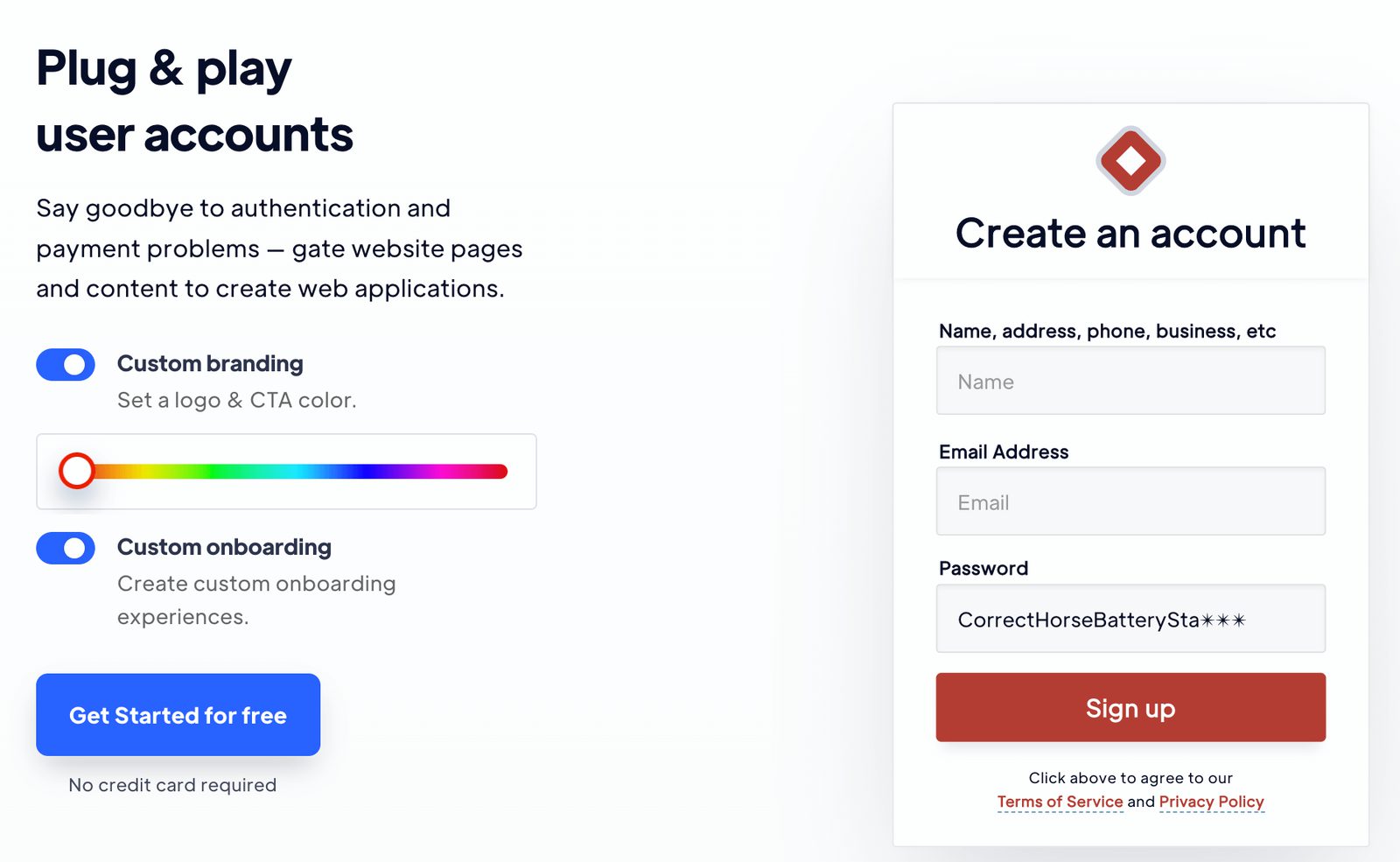
This is a smart way to drive engagement and show users how easy it is to build customized user flows with Memberstack’s platform.
6. Inject personality into your content
Many marketers make the mistake of thinking B2B readers are only interested in hard facts and that they don’t want to be entertained.
This simply isn’t true. Obviously, the tone and personality your content takes will depend on your own guidelines and target audience, but remember, B2B buyers are people too. They often enjoy a laugh or 2.
Check out Gong’s blog, for instance.

Actionable, valuable, and helpful, but not without a bit of personality to help readers relate to the brand.
7. Leverage customer data to segment audiences and messaging
As your company grows, you will have more than 1 type of customer.
These different customers will have different needs, desires, pain points, and uses for your product.
So, communicating with all of them in the same way doesn’t make a lot of sense, does it?
Use the data you have on customers to segment audiences and provide more personalized messaging to every lead on your list.
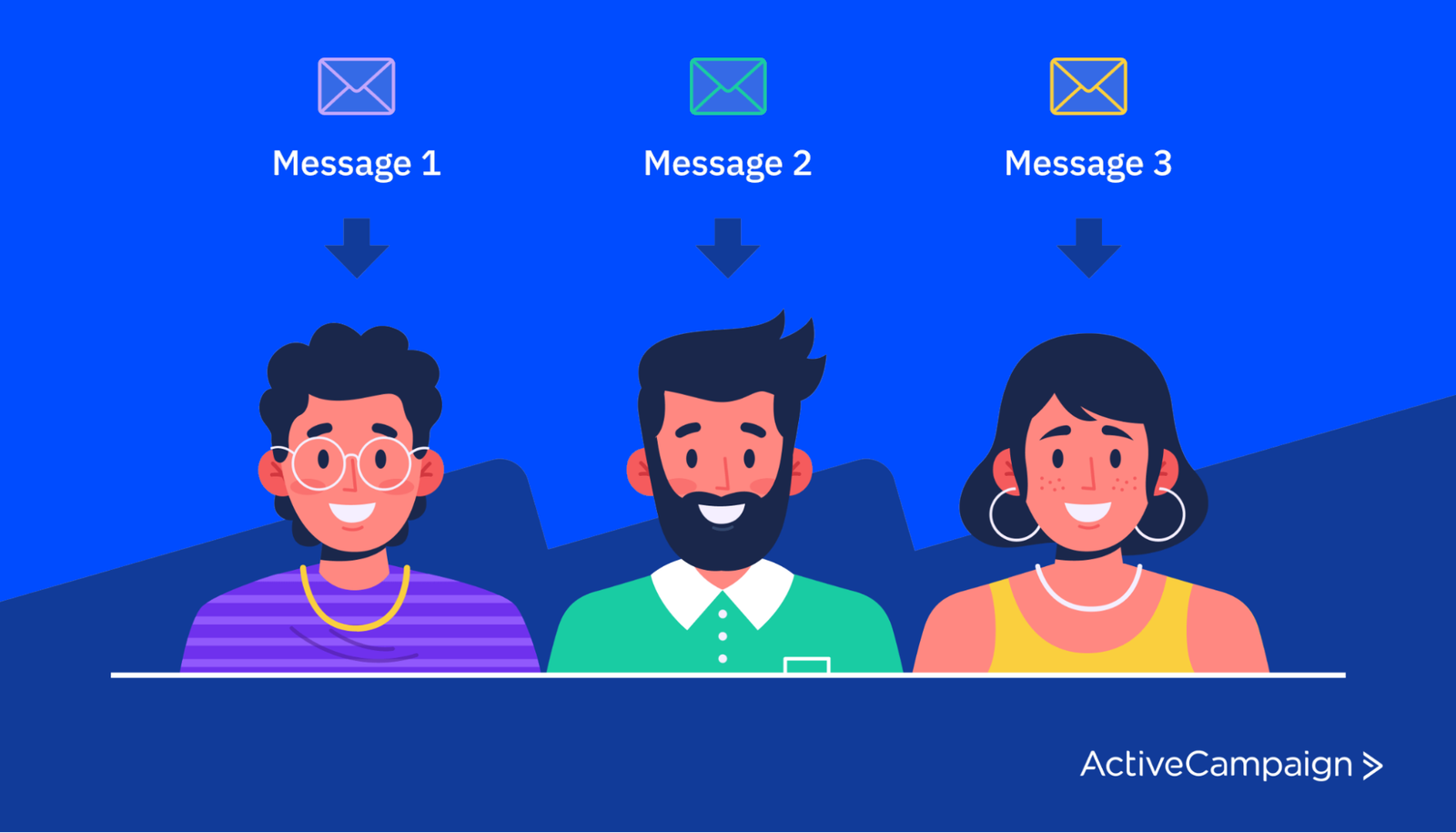
Remember that sales CRM from the first point, the 1 that served real estate agents through a channel marketing program?
Well, maybe they don’t just help real estate agents. Maybe they have a few different customer segments:
- Real estate agents
- Startups
- Insurance agencies
- SaaS companies
- Tertiary education providers
By analyzing the data you have on your customers (in this example, their industries), you can build customized messaging and content for each audience. Insurance agents, for example, might receive an email sharing a blog on the top ways to cross-sell life insurance to home insurance policy owners.
8. Deliver dynamic content on product-focused landing pages
An effective B2B marketing strategy influences a customer’s purchase decision by speaking directly to their needs.
But, when you have multiple audience segments, doing that with a single landing page is impossible.
One of our favorite digital marketing tactics for getting around this is the use of dynamic content.
Rather than having a single landing page, you build several versions that target different user groups. You then track user attributes on your site and automatically display the most relevant version based on the data you pull up.
Website personalization lets you showcase different images, headlines, and copy to different visitors (as long as they’re registered in your CRM).
9. Prioritize customer success and retention efforts
B2B businesses should be focused not only on influencing the initial buying process but also on building long-term relationships with customers to keep them coming back.
This focus on the loyalty stage of the funnel is especially crucial for SaaS and subscription-based companies, as your revenue growth is primarily based on your ability to retain customers.
There are many ways to influence retention.
Customer success programs (with a dedicated customer success manager) are a good start, as they focus on ensuring customers get actual value out of your product and achieve their initial goals.
They’re unlikely to churn if they’re using your tool to win in business.
Referral programs can be a great way to measure customer satisfaction (they’re not going to refer someone if they aren’t happy with your company!), and rewards programs can incentivize repeat purchases and drive engagement.
10. Don’t “post and ghost”
If your marketing team plans on using social media channels as part of your B2B marketing strategy, it’s crucial that you focus on engagement, not just metrics like how many times a week you post.
“Post and ghost” might be a good strategy for influencers looking to avoid the stress of reading Twitter comments. But that’s not suitable for businesses—your goal is to maximize interactions and build relationships.
Take Brendan Hufford, Founder at Growth Sprints.
Hufford is incredibly active on LinkedIn, but he doesn’t just post; he engages with his audience.

This level of engagement built Hufford a huge audience that he has been able to tap into since launching his startup.
11. Develop segmented lead nurture campaigns
B2B marketers love email marketing lead nurture campaigns.
The thing is, B2B customers often don’t, and that’s because the marketing messages they’re receiving aren’t relevant to them.
To influence B2B buying decisions, you need to share relevant content, and that means relevant to that specific customer, not to your customer base in general.
To achieve this, you need to segment customers and deliver content that will guide that specific lead through the sales process.
Let’s say you’re a marketer at Toggl Plan, a project management platform. You have 3 main customer segments:
- Creative agencies
- Consultancies
- Construction teams
Including white papers on best practices for marketing agency billing will be a valuable resource for the first segment but not so much for the third.
Segment your lead nurture sequences by use case or industry (depending on what makes the most sense for your customer base), then schedule relevant content to drive engagement and conversion.
Master Your B2B Marketing Strategy
Frequently Asked Questions
What is B2B marketing?
B2B marketing is a marketing approach adopted when businesses wish to sell their products to other businesses.
It’s especially common in the SaaS (software as a service field), as many products are sold to other companies.
What is the difference between B2B and B2C?
B2B stands for business to business.
B2C stands for business to consumer.
The difference is the customer type as B2C businesses sell directly to consumers and B2B companies sell to other businesses instead.
What are some B2B marketing strategies?
We’ve compiled a list of our favorite strategies for B2B marketing teams here:
1. Create a channel partner marketing program
2. Invest in a long-term content-based SEO strategy
3. Use account-based marketing to target high-value customers
4. Build a community in your industry
5. Use interactive content to drive engagement
6. Inject personality into your content
7. Leverage customer data to segment audiences and messaging
8. Deliver dynamic content on product-focused landing pages
9. Prioritize customer success and retention efforts
10. Don’t “post and ghost”
11. Develop segmented lead nurture campaigns
(For more details, simply read the sections above.)
Conclusion
All of the B2B marketing strategies we’ve just discussed are powerful ways to attract and convert customers but don’t expect them to work perfectly right out of the box.
To get the most out of your marketing campaigns, you will need to engage in a lot of testing and iterations.
For example, take strategy 8: Deliver dynamic content on product-focused landing pages.
Determining the right kind of content for each audience segment to include on that landing page will take some A/B testing.
Only through this kind of iteration will you understand exactly what works for your audience.
Become a testing and iteration pro with our comprehensive guide on the subject: The Guide to A/B Testing in 2022 (with Examples and Strategies).
And, of course, if you want to personalize your marketing so your content better resonates with your individual B2B leads, take a look at what the ActiveCampaign marketing automation platform can do for you.





